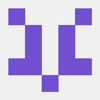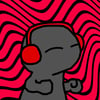Software developers need to focus on users’ health and well-being while designing their digital products.
January is supposedly a time of the year when people in the northern hemisphere feel the most depressed and melancholic. In 2005, psychologist Dr Cliff Arnall even came up with a mathematic formula based on which we can presumably calculate the level of happiness (W+(D-d)]xTQ/MxNA – if you are really curious, go here). Basing on this formula, each year someone (we wonder who!) calculates the most depressive day of the year – Blue Monday.
Many research studies point towards the misuse of technology as a root cause for our anxieties, depressions, and difficulties with focus. However, it is worth noting that numerous digital development agencies have been coming up with positive tech solutions to enhance the well-being of their users.
These solutions include many different ideas – from creating user-friendly mobile apps for meditation and health to software developers and UX designers re-thinking products so that they support the mental health of the consumer. Find out more about some of the digital products that can help you stay sane.
Blue light filters
Research has shown that of all the light frequencies emitted by electronic screens, it is the blue light that can be most harmful – especially if we stay in front of our devices late into the evening.
That is because our bodies associate this light frequency with daytime when it boosts our energy levels and mood as we absorb it with sunlight. However, exposing ourselves to blue light after dusk messes with our circadian rhythm and might disturb normal sleep patterns, because it suppresses the secretion of melatonin. Bad quality sleep can consequently lead to problems with focus, anxiety and a higher risk of certain diseases.
Software developers have come up with solutions to this problem. There are numerous free applications you can download to block out the blue light. One of the most popular ones is f.lux, a cross-platform program that advertises itself as ‘making the color of your computer’s display adapt to the time of the day’. This essentially means adjusting the wavelength of light emitted by your devices to the natural light outside. As a result, even if you use your screen late at night, it becomes much less harmful.
Similar solutions are built into the major operating systems. Most Macs have a native ‘Night Shift’ feature that you can either turn on manually or set as a default mode each day during certain hours. The same can be found in Windows 10. Android offers a downloadable app called Twilight, which is encouraged to use for bed-time reading or watching videos on mobile devices.
White noise apps
Just so you know: I am currently writing this article to the sound of cicadas, rain, and fire coming from… my computer. The ambient noise apps became very popular recently and for a good reason.
It is well-established that certain types of background noise can be beneficial for your sleep, as well as improve concentration at work or help you relax. The idea behind it is the white noise: an even distribution of all sound frequencies within the range of human hearing. The core point of generating white noise is to create a ‘sound wall’ consisting of all sound frequencies so that our focus (or peace of mind) is not disturbed by other randomly appearing noises.
Mobile web applications providing white noise for work or rest base largely on sound loops with recordings of nature noise – waves, raindrops, fire, birds chirp or burning wood. A good example is a currently trending app called Noisli, which enables the user to compose their own soundscape by choosing from 16 different noises that can be mixed together and controlled in terms of volume.
The software developers of Noisili claim that their product can improve focus, productivity and help people relax. Having been a very active Noisli user recently, I can’t help but agree.
Other similar and equally popular background noise apps are White Noise and Rain Rain. They either come in basic free versions or in premium, with additional sound packs available. Those apps also include options to save your own mixes or set an alarm clock waking you up with pleasant white noise of your choice.
Meditation apps
Meditation and mindfulness mobile software is a great example of how users are willing to proactively use technology to initiate positive changes in their behavior. It is not merely about neutralizing the negative effects of our everyday environment – people are clearly looking into technology to help them live better lives.
Those mindfulness tools are mostly mobile app solutions. Certain iOS versions for iPhone already have a built-in ‘Health’ application with mindfulness function included. It encourages the user to ‘take a few deep breaths’ or log ‘mindfulness minutes’ into their phone daily.
Downloadable apps that offer guided meditation, help with relaxation or prompts to be mindful are already too many to count. Some of them even offer courses and podcasts to help you develop qualities like gratitude or compassion, as well as link users to a ‘supportive community’ which is supposed to help in achieving mindfulness goals. Among the most popular apps of this sort, you will find names such as Calm, Zen, Headspace, Insight Timer or Aura. If you want to look into it more deeply, check out this dedicated article.
With all their potential benefits and appealing design, it is worth checking who contributed to the design of such a life-bettering app. Best mindfulness and meditation applications on the market involve the expertise of mental health practitioners and psychologists.
Mental health in the UX design process
Technology that was once blamed for the damage to the mental health of its users now has the potential to become a saving grace for some of them. That’s because there is a growing awareness that the real impact of technology on well-being comes from the way we use it.
More than about fancy health and productivity apps, it is about making sure that any digital product is designed with the benefit of its user in mind. Top developers are already conscious of the solutions that can have a positive impact on the end consumer of virtually any digital product, such as a mobile app or website interface.
The future of the sustainable and healthy digital market is in the hands of software developers and UX designers. They are the ones who create the experience for the end-user, from personalizing app features and designing an intuitive layout to planning communication between the client and customer service.
It is becoming evident that the way digital products are designed can have an impact not only on customer satisfaction but also on their overall health. An example of a company that puts a lot of attention to mental-health friendly UX design and makes it part of their brand is Monzo, a mobile banking service from the UK.
Ideamotive is walking this path, too. Throughout each project, we make sure that our software developers and UX designers are working with the benefit of the user in mind. We believe that this approach satisfies the needs of all the parties involved – our direct client, end consumer, as well as our agile development team.
To learn more about our project development process, don’t hesitate to contact us directly.







Top comments (0)